
24 minute read
MarketIssues
MI MarketIssues TISSUE WORLD MIAMI 2022
Tissue World “reality” returned for an impressive four days in Miami with over 100 exhibitors and more than 1,200 total participants kicking off its first in-person exhibition and conference in more than two years in style.
he modernised Miami Beach
TConvention Center was the perfect location to welcome the global tissue and towel industry back to in-person business during 15-18 March, 2022.
It was the first time the industry had met in-person since the start of the pandemic, with many in the industry meeting friends and business partners again for the first time in many months.
North America’s largest tissue exhibition and conference welcomed more than 100 exhibitors and more than 1,200 total participants from 47 countries.
The new-look tradeshow floor hosted visitors and exhibitors keen to sign deals and view the latest technologies: from paper machinery, through to converting, packaging, chemicals and AI.
Hundreds of attendees at the fourday conference – with the theme Tissue Today & Forever, Drivers and Strategies for a Sustainable Future - heard delegates discuss a wide range of issues in deepdive question and answer sessions aimed at navigating the challenges of the years ahead.
Expert speakers from across tissue’s value and supply chains shared industry insights and expert knowledge on the latest trends and developments, which also included technical sessions from leading machinery suppliers and the Yankee Dryer Operations Workshop.
The networking drinks reception was one of the busiest seen in years, so much so that it was repeated on the second day, as friends and colleagues caught up and discussed deals.
Making sure safety is uppermost
As part of Tissue World’s ongoing commitment to ensuring that everybody attending – be it visiting, exhibiting or sponsoring – felt safe and confident, various safety measures were in place.
The exhibition was organised in accordance with event organiser Informa Market’s AllSecure health and safety standard.
Informa Markets has developed a detailed set of enhanced measures to provide the highest levels of hygiene and safety at its events.
Tissue World is the only global trade show offering you a platform to do business across all aspects of your day-today business life.
Miami 2022 was a great start to a unique year for Tissue World, and our industry friends across the world.
We would like to thank all our exhibitors, visitors and partners for their support over the past few years.
For those who couldn’t be there, and for those who could, over the next few pages Tissue World Magazine carries a summary of some select key issues raised during our conference’s Senior Management Symposium sessions.
EXPERT SPEAKERS FROM ACROSS TISSUE’S VALUE AND SUPPLY CHAINS SHARED INDUSTRY INSIGHTS AND EXPERT KNOWLEDGE ON THE LATEST TRENDS AND DEVELOPMENTS, WHICH ALSO INCLUDED TECHNICAL SESSIONS FROM LEADING MACHINERY SUPPLIERS AND THE YANKEE DRYER OPERATIONS WORKSHOP. THE NETWORKING DRINKS RECEPTION WAS ONE OF THE BUSIEST SEEN IN YEARS, SO MUCH SO THAT IT WAS REPEATED ON THE SECOND DAY, AS FRIENDS AND COLLEAGUES CAUGHT UP AND DISCUSSED DEALS.

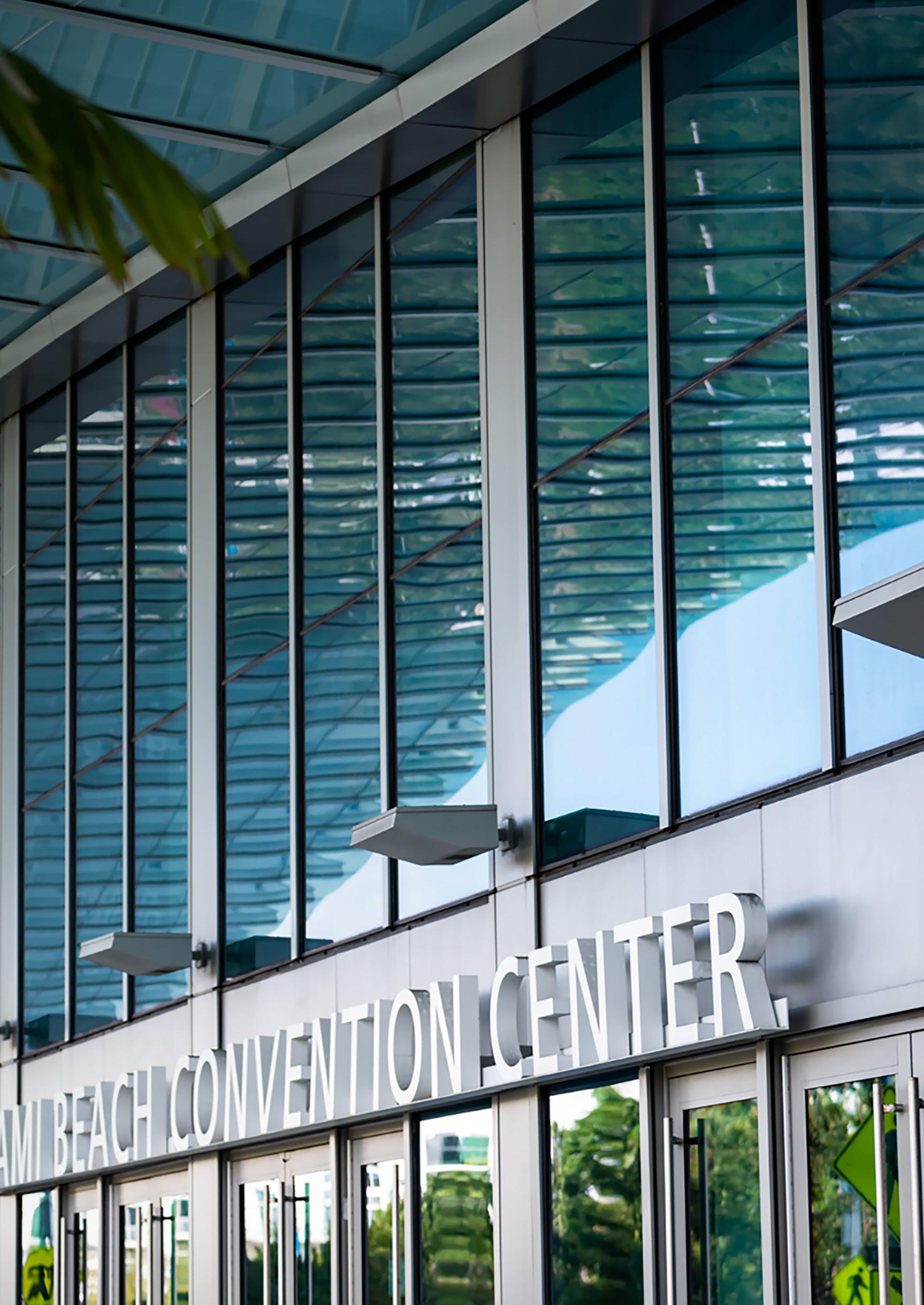
‘Consumers want sustainability, quality and price. From single element to whole bundle, and more consumer transparency and information.’
Dino Bianco
POSITIVE CHANGE FOR THE FUTURE OF TISSUE
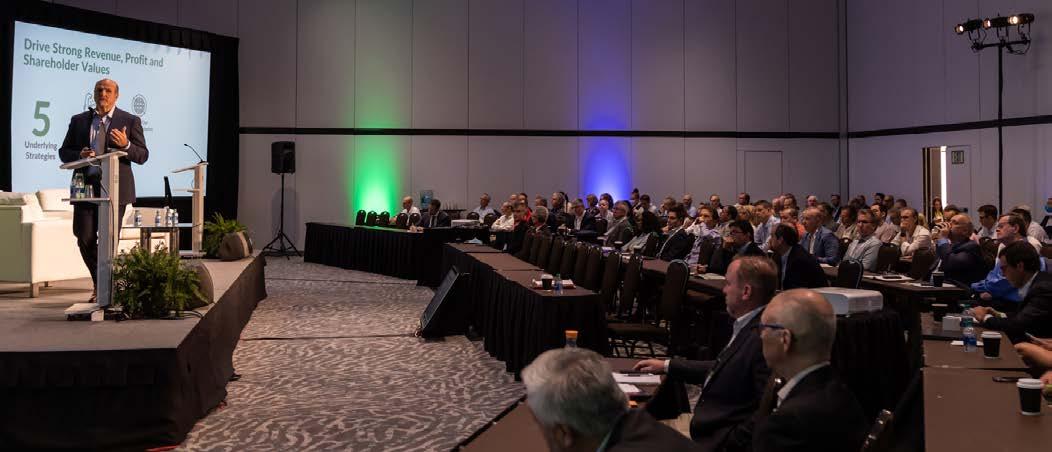
Dino Bianco, Chief Executive, Kruger Products
Mission and vision
To drive strong revenue, profit and shareholder values, and be the most trusted tissue company in North America. We will do this by building our consumer muscle, expanding our business footprint, excelling at end-to-end supply chain excellence, driving sustainability, and creating a winning team and culture.
Kruger Products is Canada's number one tissue company, claiming 47% of all branded volume and 33% of all tissue. We are also the number one branded tissue company in Canada, holding the first slot in bath and facial, and number two in towel. We are the seventh largest tissue manufacturer in North America, with 2020 sales of $1.5bn and presence in the consumer and AfH markets. We have nine product facilities, 80 converting lines and 14 paper machines.
Over the past two years we have reinvested in our product innovations and strategies. Our highest quality paper towel is now comparable to leading US brands. We have state of the art TAD capability. In Q1 2021 we launched SpongeTowels UltraPRO in Canada, and in Q1 2022 we launched White Cloud UltraPRO. In Q1 2022, we introduced our sustainablyfocused brand Bonterra across bath, towel and facial.
Sustainability remains key
emissions by 26%*, reduced water consumption by 37%*, and 100% of fibre was third-party certified.
Our 2030 sustainability targets include: • To use 100% third-party certified fibres; • To reduce scopes 1 + 2 emissions by 25%*; • To reduce water consumption by 50%*; • To reduce virgin plastic packaging in branded products by 50%*. (*Intensity-based versus 2009 benchmark)
Sustainability moving from supply chain to shelf in tissue, from company reputation to brand reputation. Consumers want sustainability, quality and price. From single element to whole bundle, and more consumer transparency and information.
Moving to a digital world
Kruger Products is making a significant investment to utilise AI across our business system. Several groundbreaking technologies present great opportunities in tissue:
PLANNING OPTIMISATION
1. Demand forecasting 2. S&OP execution optimisation
SUPPLY CHAIN & PROCESS SIMULATION
3. Dynamic simulation 4. Setpoint optimisation 5. Loss prediction 6. Quality optimisation 7. Predictive maintenance
This will all result in our ability to optimise and refresh integrated plans to adjust to demand and operational fluctuations; build a control tower with live supply chain tracking to support tactical and strategic decisions via what-if scenarios and predict process and supply chain behaviour and outcomes and recommend procedural and operational optimisations. Technologies present opportunities across the value chain.
Investing for growth - $1bn investment since 2018
New Sherbrooke plant: $575m investment, TAD PM (70,000tpy), three converting lines, started-up February 2021. This project was managed during Covid-19, where we hired and trained 180 people remotely.
Additional investment at Sherbrooke: New plant announced, 60tpy conventional paper machine, two new converting lines in a $350m investment with start-up staged for 2022–2024.
At completion the Sherbrooke tissue hub will have two paper machines producing 130,000tpy, five converting lines, to produce ultra-premium and conventional products, BT, PT and Facial capability.
The future of tissue is exciting!
Create new horizons. That’s the power of the twentieth.
Time, as Einstein said, is relative. Its real value is in how we use it. Today Futura turns twenty and looking back we can see just how far we have come in such a short time. Technological leadership, continuous innovation and automation: in the context of partnership, they have accelerated our ability to deliver superior performance for our customers. We’re twenty. But what we stand for is ageless.

MarketIssues SUSTAINABILITY, STAKEHOLDER CAPITALISM AND SHARED VALUE CREATION: SOFIDEL'S ROAD TO THE FUTURE RUNS THROUGH ESG REPORTING
Luigi Lazzareschi, Chief Executive, Sofidel Group
How sustainability has become one of the central themes of contemporary public debate
Today, sustainability is a mainstream issue. But it took many years for this to happen. These are just some of the steps, or significant moments, that have prompted sustainability to establish itself among the central themes of the contemporary debate.
In 2008, sustainability became a strategic development factor for Sofidel. If not an answer, we already had a clue. Sofidel has its roots in a model of "responsible proximity" capitalism that sees many family businesses naturally oriented towards sustainability. For the longer term view, we needed to systematise and enhance this heritage. Integrating sustainability to make it a strategic growth driver for the creation of long-term shared value for all our stakeholders.
We tried to be clear and transparent from the beginning. We wanted to make public the ten main benefits that, in the medium to long-term, Sofidel expected from integrating sustainability into its growth strategy. This was mainly achieved by: • Working with authoritative and competent partners, environmental sustainability objectives defined and made public • Results verified by third parties and made public • Reporting activities carried out according to international standards • Stakeholder engagement and awareness activities • Constant orientation towards transparency and collaboration with all stakeholders • Important investments in technological, process and product innovation In minimising its impact on natural capital and fostering the transition to a more just and inclusive low-carbon economy Sofidel has made particular efforts to: • Fight against climate change • Work towards responsible sourcing of raw forestry material • Reduce water consumption • Reduce the incidence of plastics in the production process • Engage stakeholders
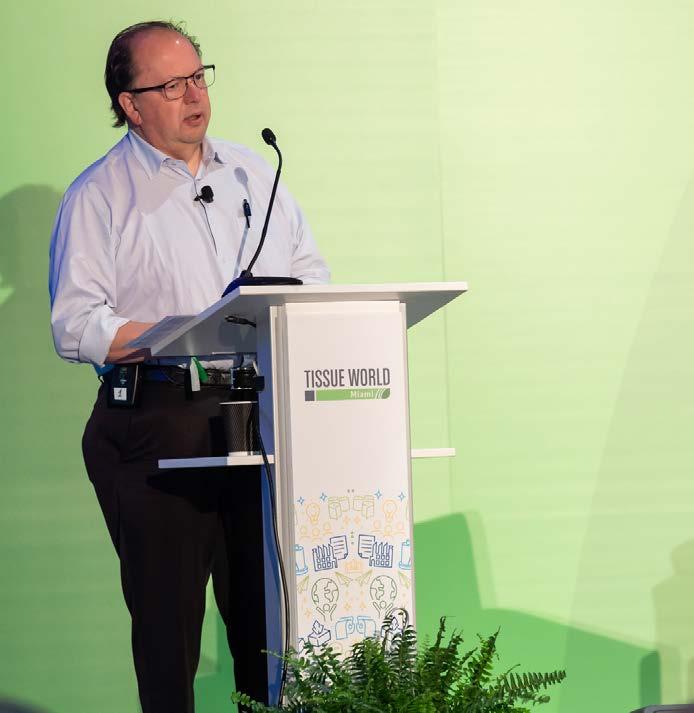
Some of the objectives we have achieved are: • 24% reduction in carbon intensity (2009.2020) - (746kg CO2 per tonne of paper) by implementing innovative strategies and technologies such
as energy efficiency improvement, combined generation of heat and power (CHP), renewable sources (wind power, solar panels, hydro power), biomass boilers • 100% of cellulose certified by independent third parties with forestry certification schemes (FSC,
PEFC, FSC Controlled Wood) • 96.6% rate of water recycling into production cycles and 7.2 l/kg average consumption in litres per kg of paper produced, very close to the lower end of the range recommended by the Best Available Techniques (BAT) of European Union for Pulp and
Paper sector • Reduction of the incidence of
‘It is in our mutual interest to standardised reporting rules for communicating analysis of ESG parameter impacts into our processes.'
Luigi Lazzareschi
plastic packaging by 19.6% with the adoption of plastic film with lower thickness and with the optimization of its packaging design • 81% of Sofidel’s procurements are sourced from sustainable suppliers, classified as excellent
How does Sofidel respond to the challenges that the world faces? How can it really do its part to build a better future? Clean living is our answer, our purpose and our promise.
PRODUCT – Clean Living, for everyday needs. Products fundamentally designed to ensure the hygiene of people, home environments, and workplaces. To make our days easier and to enrich our quality of life.
ENVIRONMENT – Clean Living, for a healthier planet. A sustainable approach to production to reduce our environmental impact and promote ecological transformation.
PEOPLE – Clean Living, for integrity and respect. A way of doing business and building relationships based on respect for the values of professionalism, competence, honesty, and transparency, for a fairer and more inclusive society.

Sustainability reporting is increasingly relevant
The world is focused on the ecological transition and its economic and social consequences, and there is a strong demand for standardised accounting systems to report on the relationship between financial performance, risk, and social and environmental impact generated by the choices made by companies. It's time to bridge this gap between information supply and demand.
In its path of integration and implementation of sustainability policies, Sofidel has voluntarily chosen to have the results achieved verified by third parties to safeguard the reliability of the data disseminated and to allow sharing and comparison with other players.
Important steps are taken in Europe: the “Double Materiality”
The issue of measuring the social and environmental impact of businesses is a key point in European development policies. The European Commission is working on ESG reporting requirements that include the so-called "double materiality" principle.
In simple terms, it means that not only the impacts related to environmental and social sustainability dimensions on a company activities can be material, but also the impacts generated by a company’s operating activities - as well its value chain, upstream and downstream - on any sustainability dimension. Companies will be required - expected from 2024 - to disclose information on both the environmental and social risks they face and the impacts their activities actually cause on these dimensions.
IFRS works for the standardisation of ESG reporting principles worldwide
At the same time the Financial Reporting Standard (IFRS) is working to bring accounting harmonisation to the measurement of corporate environmental and social impacts. Sofidel’s road to the future runs through ESG reporting. Sofidel deeply believes that a strong ESG proposition helps create long-term shared added value. In its journey from "shareholder company" to "stakeholder company", Sofidel intends to invest more and more in ESG reporting which it now considers to be an essential competitive lever for these reasons: • Reporting on environmental and social impacts in a measurable and transparent manner • Improving strategic planning • Promoting innovation • Expanding stakeholder engagement • Effectively countering any form of greenwashing or unfair competition ensuring long-term shared added value for people and the planet.
What did the Covid-19 pandemic experience highlight?
The Covid-19 pandemic highlighted: • The close interrelationship linking economic, environmental and social dimensions • The importance of safeguarding the quality of information • As individuals, citizens and consumers, we form opinions and make decisions based on the information we have and on which we build relationships of trust. • There is an increasing demand for consistency and transparency especially from younger generations.
It is in our mutual interest to work towards having standardised ESG reporting methodologies and rules for integrating and communicating the analysis of ESG parameter impacts into our processes. The business world must meet this growing demand for information. From here comes its legitimacy. To be, and to be able to document, that we are organisations capable of creating lasting well-being for people and for the planet.
NEW LOCATION
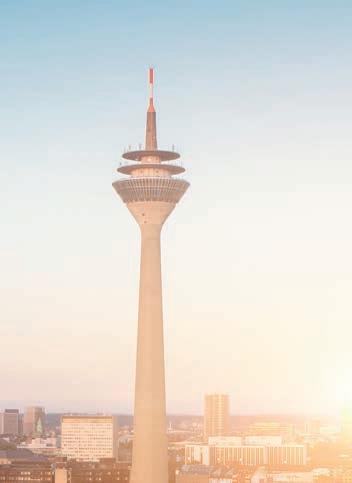
THE WORLD’S LARGEST DEDICATED TISSUE INDUSTRY TRADE SHOW


28 - 30 MARCH 2023



2023


Portfolio 2023!

Organisedby
www.tissueworld.com/dusseldorf info@tissueworld.com
TISSUE MARKETS OVERVIEW AND FORCES THAT WILL SHAPE THE NEXT FIVE YEARS
Matt Elhardt, Vice President, Sales, Fisher International
10 facts about global tissue
1. Global tissue is a ~60 million st market
Asia now accounts for half of the world’s tissue machine capacity Asia Pacific - 29,729,266 FST (49%) Europe - 12,696,408 FST (21%) North America - 9,950,382 FST (16%) Latin America - 6,142,715 FST (10%) Middle East - 1,315,687 FST (2%) Africa - 1,132,740 FST (2%)
2. Population and urbanisation drive tissue production - China and US account for over 50% of global capacity.
3. Tissue is a “local” business. Trade is much lower compared to other pulp/ paper markets, and less than 5% of tissue capacity leaves the home region in the EU and North America.
4. Since 2010, new investment in tissue has been driven by Asia. The region now accounts for 70% of new machine capacity in recent years.
5. Tissue supply is (mostly) fragmented everywhere in the world. Companies rarely exceed 20% capacity share in any regional geography.
6. Like politics, tissue dynamics are local. Of the top 10 global tissue companies, only two operate in more than two regions.
7. Tissue mills buy market pulp for most of their furnish 60% of parent roll costs for the average global tissue mill.
8. Globally, tissue prices and pulp prices share turning points. Non-fibre costs drive margins.
9. The USA is unique in share of advanced tissue making, with 90% of the world’s market for TAD, NTT, etc, located there.
10. We expect global tissue demand to grow 1%-5% in the coming decade, with the most growth seen in Asia. NORTH AMERICAN ANNOUNCED T&T CAPACITY AND EXPECTED DEMAND ANNOUNCED CAPACITY IS EXCEEDING GROSS DEMAND BY 600 BPS. SOME 80% OF NEW CAPACITY IS ANNOUNCED BY COMPANIES THAT SERVE PRIVATE LABEL MARKETS. PRIVATE LABEL CAPACITY IS GROWING FAST AND FRAGMENTING.
U.S. / Canadian tissue: North American tissue by the numbers
Demand - 10,000,000 st Net Imports - 480,000 st Expected Growth - 1% Private Label Share - 1.3rd
North American Top-10 Tissue Producers by Capacity: the top three companies - GP, P&G and K-C - own 56% of total capacity.
(Some) Trends to Watch…
Uncertainty may be higher now than it has been in decades, resulting in drastic shifts in habits.
Covid-19 caused an acceleration of consumer buying shifts – particularly AfH to At-Home, and e-commerce. The industry saw 10 years of change in 10 weeks. Widespread supply chain issues persist. The question remains how long aftershocks will persist and whether new variants will emerge. What consumer changes will stay will also be one to watch, with currently 70% of companies planning to continue with hybrid work.
First “major” European land war in 70 years. More unknowns than knowns at this point, probably two main immediate impacts to global tissue – Pulp prices (if capacity is shut) – Gas prices – rocket-high spot prices in Europe have already caused some Italian capacity to close. Gas prices could create significant short-term pain for unhedged companies, creating dislocations in manufacturing competitiveness.
The antidote to uncertainty is scenario planning – identify risks and address them, find the “underlying truths” that are likely in most scenarios.
Longer term trends to watch in the coming years
Will new capacity (especially in private label) create a bubble? North American announced T&T capacity and expected demand announced capacity is exceeding gross demand by 600 bps. Some 80% of new capacity is announced by companies that serve private label markets. Private label capacity is growing fast and fragmenting. Will the industry consolidate?
Carbon: whether voluntary or mandatory, carbon will increasingly be a cost for producers. How will the industry take advantage of the significant shift in views on the environment?
Takeaways
• North American tissue is very likely to see a cycle of surplus capacity over the coming years. Pressure will vary by tissue segment and channel – Among private label, low-cost producers who can compete will gain share – Better quality, and the prospect of reduced consumer spending power (inflation) could be a tailwind • Will branded players create innovation that reverses the trend of private label share growth? • Carbon costs – either voluntary or mandatory – will become more widespread in the next five years.
Opportunity for owners who can articulate their story proactively! • Exogenous factors (Covid-19, inflation) are creating more uncertainty than in recent history. Managers are well advised to adopt scenario planning (even if high level), and place their bets.

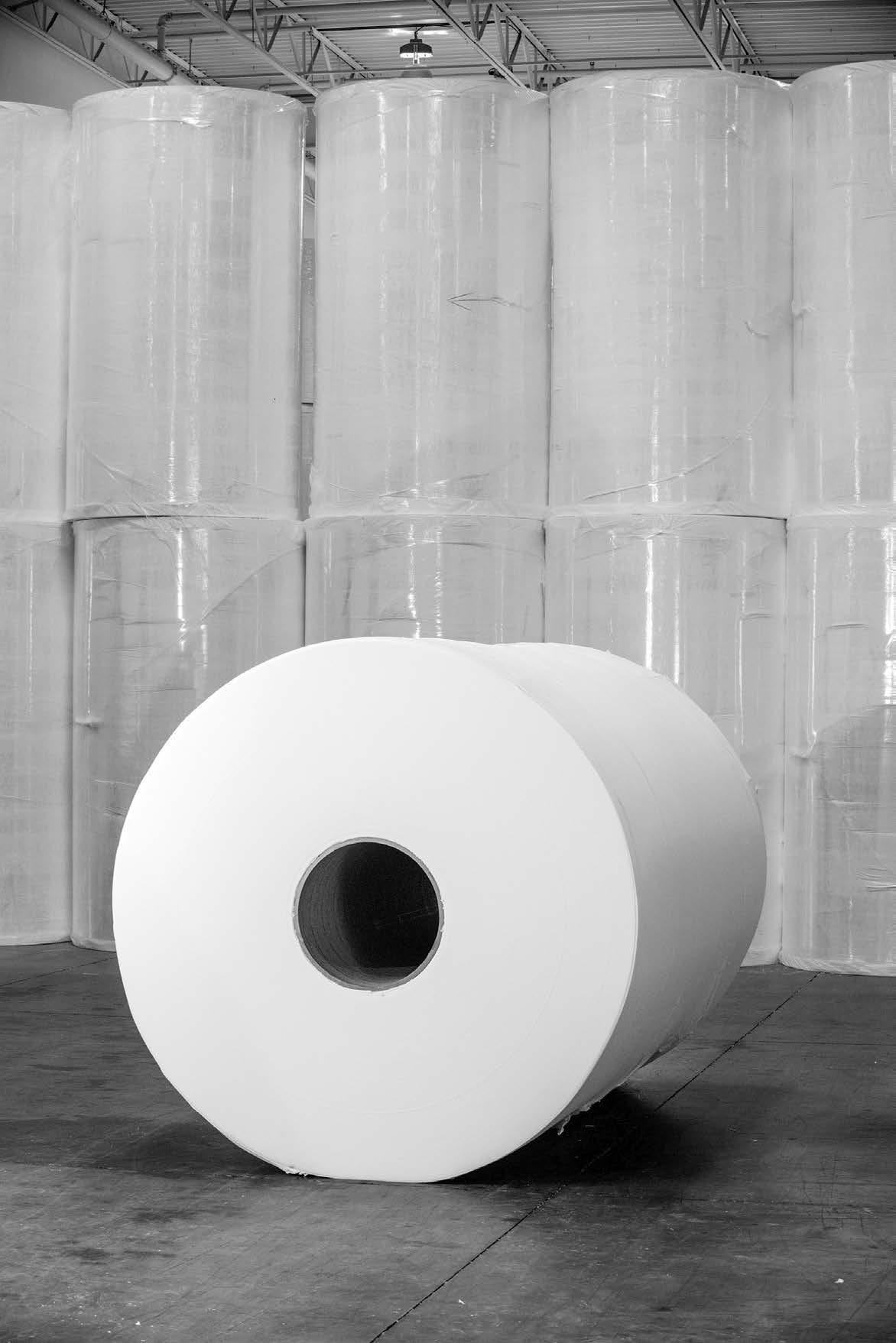

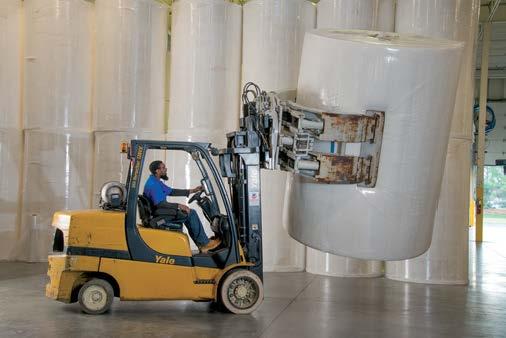
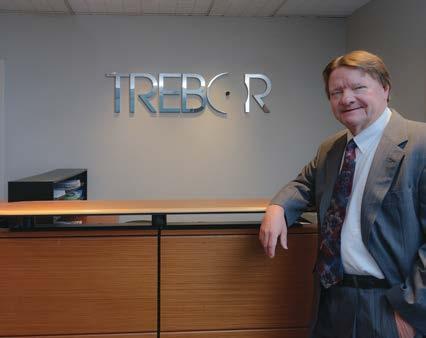


THE PATH TO GROWTH AHEAD: OUTLOOK FOR GLOBAL CONSUMER TISSUE AND OPPORTUNITIES
Liying Qian, Senior Analyst, Euromonitor International
Global consumer tissue reassumes near pre-pandemic pattern, as the developing world drives an increased share of tissue consumption. Of the 4.3m tonnes of consumer tissue consumption increase from 2021-2026, 95% will come from the developing world.
Toilet paper remains dominant, while facial tissues lead growth and possibilities for premiumisation. The market is seeing evolving business models, digital-forward consumer shopping behaviours and brand interactions, heightened expectations for timeliness, fluidity and personalisation, and a subscription service boom.
Expanded opportunities for hybrid work and high health awareness will uphold consumers’ at-home cleaning routine, and this presents opportunities for innovation and value proposition for the global tissue and towel markets.
There is also an increasing shift towards a more circular economy, as well as evolving business models. Convenience and novelty are driving subscription adoption. In 2021, 42% of consumers selected “convenience” as their top motivation to subscribe, and 27% of consumers reported using a subscription service in 2021 - up from 23% in 2019.
D2C players lead the predictive personalisation journey. Mismatch between e-commerce penetration and per capita consumption across top 25 developed markets depicts potential growth white spaces.
Any low per capita consumption and high e-commerce penetration is giving increased scope for the e-commerce ecosystem to engage with the tissue customer base as it expands, while a high per capita consumption and low e-commerce penetration is offering opportunities for further pivot towards more personalised engagement online to raise brand awareness and get a competitive edge.
Willingness to spend doesn’t always match eagerness to possess. Quality and performance attributes such as softness and wet strength are top concerns: • Value for money and affordability are almost equally, if not more, influential • Where quality and value meet hits a sweet spot.
Manufacturers are increasingly thinking beyond the common parameters of softness and absorbency to meet expanded hygiene needs. Tactical, features-andbenefits messaging strikes a chord with the contemporary consumer sentiment
From sustainability to purpose
Pre-pandemic, the planet was top of mind, with 87.3% of businesses defining sustainability as protecting the environment in 2019. During the first lockdown, that changed to people first, with 59.1% of businesses prioritising social over environmental issues during the outbreak. Post lockdown, and purpose before profit was key; 60.8% of businesses planned to balance social and environmental issues in the future.
Environmental activism in 2021 was strong, and the top three consumer issues are to reduce plastics use, recycle items, and use sustainable packaging. Some 79% of consumer tissue professionals considered sustainability initiatives crucial to their companies’ value proposition, while 47% expected ethical products and brands to be very to extremely influential post-pandemic.
Eco-friendly features gather space on digital shelf
Western Europe makes up largest share of top green claims combined. Sustainability is trending in the alternative fibres markets, low-impact manufacturing, plastic-free packaging and social responsibility. Sustainability-aware consumers are most willing to pay more for eco/ethically conscious, all natural, recyclable packaging, or 100% organic.
High-growth pockets and white spaces include emerging markets with high per capita consumption, expanding digital engagement where possible, direct-toconsumer services, personalisation and portfolio diversification.
CONFERENCE KEY POINTS
Mismatch between e-commerce penetration and per capita consumption across top 25 developed markets depicts potential growth white spaces.
Today, sustainability is a mainstream issue - but it took many years for this to happen.
Antidote to uncertainty is scenario planning – identify risks and address them, find the “underlying truths” that are likely in most scenarios. 95% of the 4.3m tonnes of consumer tissue consumption increase from 20212026 will come from the developing world.
Will branded players create innovation that reverses the trend of private label share growth?
A strong demand for standardised accounting systems - to report on the relationship between financial performance, risk, and social and environmental impact generated by the choices made by companies.
Pre-pandemic - 87.3% of businesses defined sustainability as protecting the environment.
First lockdown - 59.1% of businesses prioritising social over environmental issues.
Post lockdown - 60.8% of businesses plan to balance social and environmental issues in the future.
MarketIssues THE NEXT FIVE YEARS: A GEOPOLITICAL FORECAST
Jacob L. Shapiro, Founder & Chief Strategist, Perch Perspectives
The world is in a globalisation recession posing severe challenges for supply chains … and the region of fastest growth – Asia – is the most geopolitically unstable.
Russia invaded Ukraine because it has a geopolitical imperative to expand its political, economic, and military power as far as possible into the buffer regions that surround its population core in Eastern Europe, the South Caucasus, and Central Asia.
Russia cares more about Ukraine than the rest of the world. It will be willing to sacrifice and endure sanctions far in excess of what the West is willing to. In the longrun, Russia has made a colossal strategic blunder, as it cannot "win" Ukraine by conquering it – and in the meantime, it has only made Europe far more unified than ever before.
Russia's invasion is not a geopolitical anomaly. It is reflective of a world that is going through a globalisation recession. Trade disputes have been increasing steadily for the past decade. China and the US – which cooperated with each other after the 2008 financial crisis – are at each other's throats even amidst a global pandemic. The invasion is an expression of a more multipolar and geopolitically risky world.
This is affecting countries and companies across diverse supply chains. Whether in advanced semiconductors, agriculture, or tissue, this poses a huge challenge, because many of the products and services we have taken for granted are becoming national security issues for governments.
We are not going to go back to the pre-Covid-19 world. That world is gone. The best mental map I can think of from a historical perspective for the current era is the period before World War I – the 1890s, " La Belle Époque". This was a world of rising and falling great powers, an industrial revolution, and significant uncertainty.
Note – the news is not all bad! La Belle Époque was also a time of discovery, increased overall trade despite increased regional disputes, and artistic expression. Obviously what happened at the end
RUSSIA'S INVASION IS NOT A GEOPOLITICAL ANOMALY. IT IS REFLECTIVE OF A WORLD THAT IS GOING THROUGH A GLOBALISATION RECESSION. TRADE DISPUTES HAVE BEEN INCREASING STEADILY FOR THE PAST DECADE. CHINA AND THE US - WHICH COOPERATED WITH EACH OTHER AFTER THE 2008 FINANCIAL CRISIS - ARE AT EACH OTHER'S THROATS EVEN AMIDST A GLOBAL PANDEMIC. THE INVASION IS AN EXPRESSION OF A MORE MULTIPOLAR AND GEOPOLITICALLY RISKY WORLD.
(World War I) was horrific – but for those companies that were able to identify how they were exposed to these risks and pivot accordingly, it was actually a very successful period.
How long is this going to last?
Certainly for the next five years, and likely beyond.
Note that demographic growth and GDP per capita growth is going to be focused on areas like sub-Saharan Africa, the Middle East, Southeast Asia, and Latin America. These are the areas to focus on in the future, and some of these areas will be highly competitive.
One of the biggest geopolitical indicators to watch is the US-China relationship. My favourite slide is the map of the world from China's perspective, which shows the geographical makeup of the countries surrounding the country’s shores. That map scares Beijing, and virtually assures that the US and China are going to clash from a long-term geopolitical perspective. As a result, unfortunately, the place where growth and change is happening the fastest – Asia – is also the most geopolitically unstable.
Another major trend is the global energy transition away from hydrocarbons. Five years ago, I was talking about how important renewables are and getting laughed at at conferences like Tissue World.
Now everyone is talking about renewables – and I am in the strange position of pointing out that we still depend on hydrocarbons for energy.
That will remain true for the next five years at least. Renewables are increasing, but not fast enough to cover current growth, let alone current demand. By the end of the decade, energy will likely be a deflationary force, but in the interim, and especially for the next two-three years, energy prices have legs. We are in a paradigm shift – and you have to have your feet in both paradigms to be prepared.
Climate change is the other big geopolitical force to contend with. It is the most significant challenge from a geopolitical perspective as it literally changes geography.
The bad news is the parts of the world that are growing the fastest are in large part the parts of the world where climate change is going to be most destructive from the perspective of agricultural yields, desertification, and refugee flows.
I closed my presentation with two maps of pulp/wood exports by country and tissue exports by country. I pointed out that these maps do not reflect many of the geopolitical forces I talked about in my presentation.
For companies aiming to be ahead of the curve, horizon scanning and strategic planning for both these risks and opportunities is crucial. Geopolitics is no longer a luxury in the tissue business – it's a critical input source for successful strategy.










